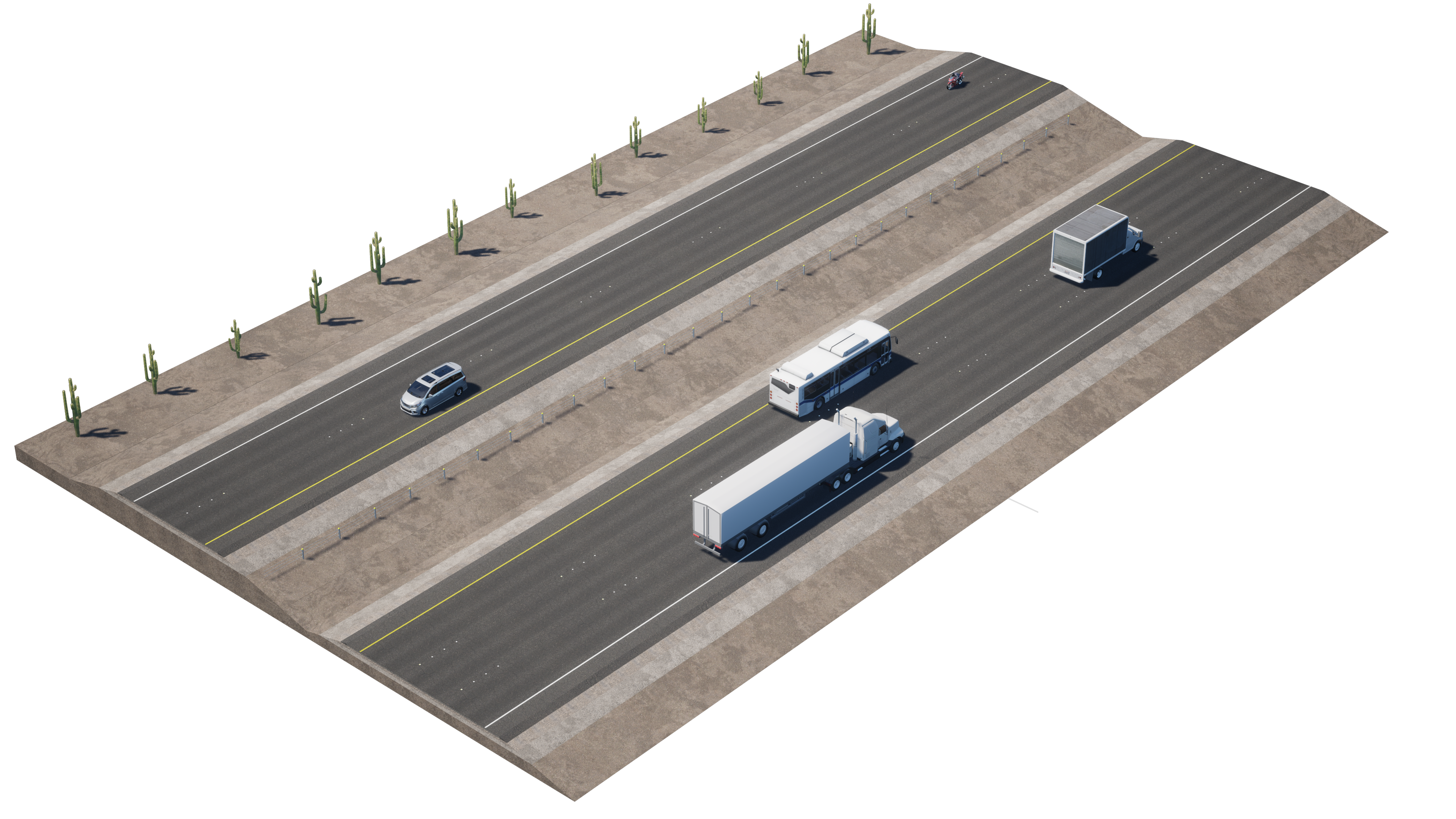
Roadway and Highway
The Roadway Designer's New Best Friend
What was previously only possible using expensive consultants (or 2D linework) is now possible in minutes with Beyond Typicals. Go from typical section 2D draft to fully animated 3D using drag and drop sections for highways, roadways, freeways and every other kind of way.
The creator of Beyond Typicals, Sam Lytle, PE, started his career at the Nevada Department of Transportation with significant time spent in the Roadway Design division. This experience shines through using Beyond Typicals or roadway design and visualization with the little things that only an engineer would know to include.
From designing and coordinating a major freeway project to communicating a mill & fill overlay to just adding some color to typical sections for a public meeting, Beyond Typicals will feel at home in any roadway design group.
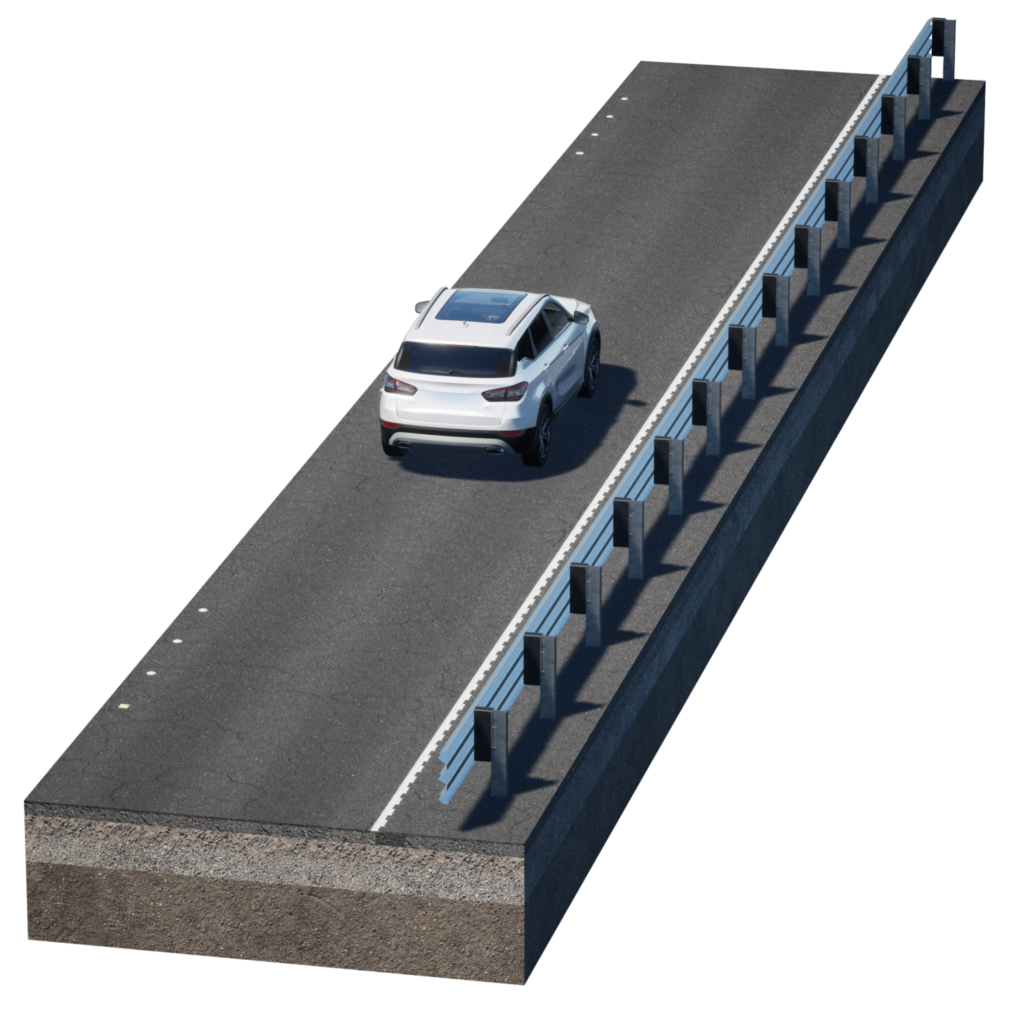
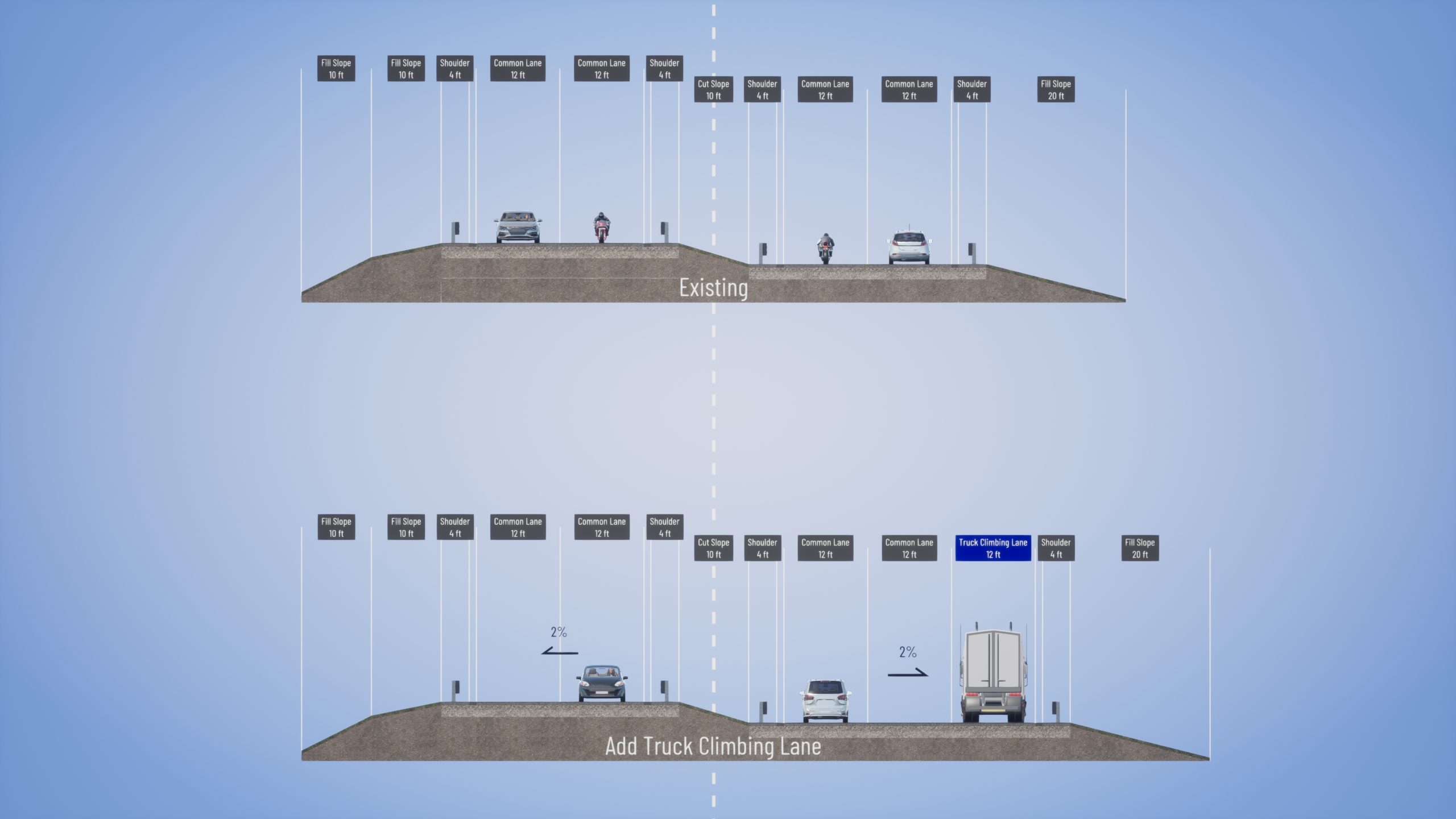
The little things
While urban and street projects share certain similarities with roadway projects, many of the important details separate these disciplines. We’ve worked to make Beyond Typicals work for roadway projects with details such as:
- 4 different types of guardrail as well as cable barrier
- A variety of concrete barrier rail types and sizes
- A rumble strip section for edge or centerline
- Raised pavement markings and reflectors
- A centerline feature for proper offsetting of proposed lanes
Powerful Features for major projects
While the ‘Phasing’ system in Beyond Typicals works for phasing and alternatives, it works equally well for sections along alignments, which is perhaps the most common use of typical sections.
Now you can quickly and clearly show how a major freeway project will change along the alignment in full, animated 3D. If 3D doesn’t fit the occasion, 2D view is just a click away. Labels can be used to communicate lanes, slope and other details of a project and pavement markings can accurately differentiate lanes such as HOV, BUS or SLOW.
While Construction and Safety are advertised use cases of Beyond Typicals, all of these disciplines can be used together to communicate proposed highway projects with important safety elements like cable barrier, crosswalks, RRFBs and pavement markings.
Striping can be adjusted to fit the requirements of your project, and elements like animated water and underground pipes can add the cross-discipline detail you will need to more efficiently coordinate your project.
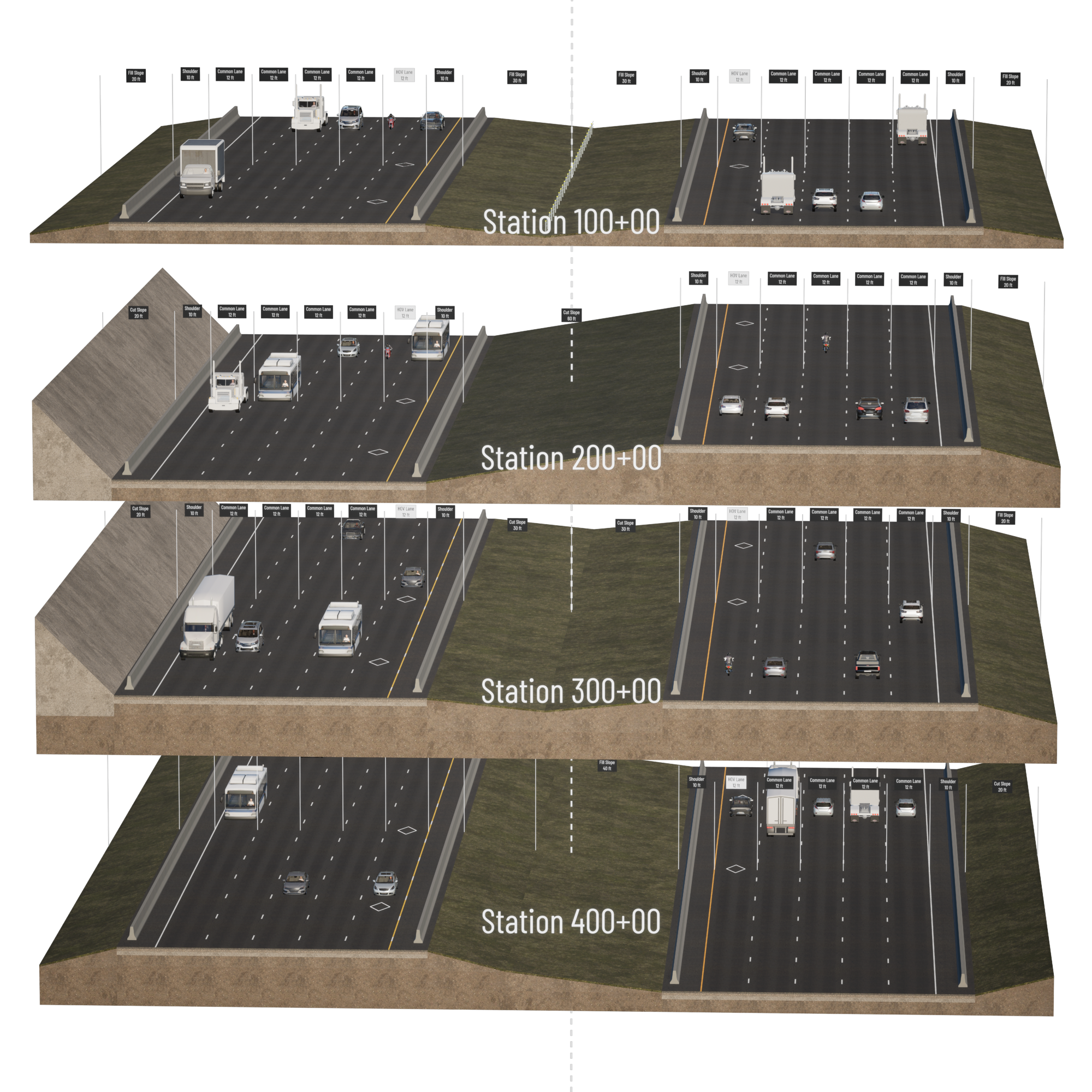
mouse-over for climbing lane
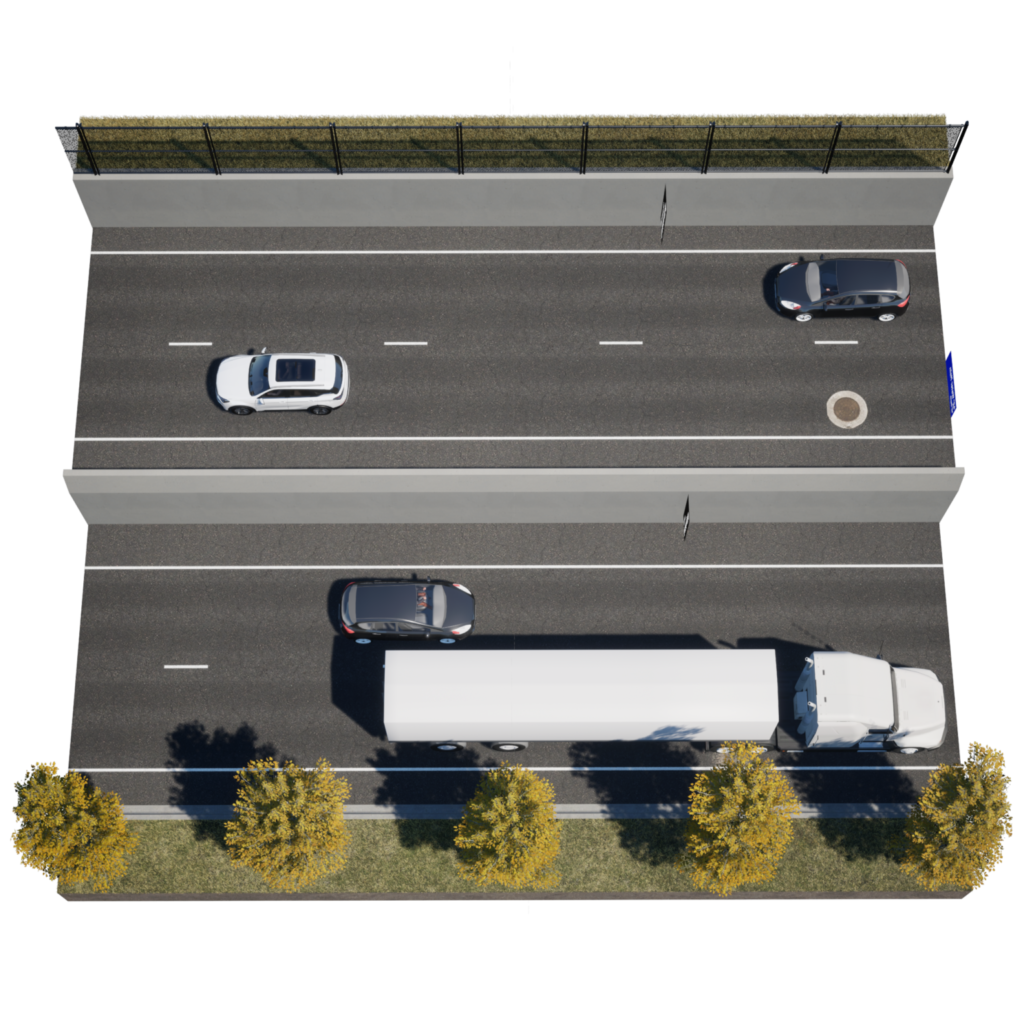
Even More Possibilities
Roadway projects aren’t flat and with Beyond Typicals, they don’t have to be. Use retaining and MSE walls to show differences in elevations and label arrows to communicate slope and superelevation. Textures can be mixed and matched to show the unique specifications of your own project including worn asphalt, brushed concrete with wear paths, fresh asphalt, gravel and dozens of other types of materials.
Oh, and the traffic? That can be customized too. Users have the ability to select which vehicles show up globally and per-lane. Yes, this means that an HOV can be adjusted to NEVER show trucks and a truck climbing lane cane be adjusted to ALWAYS show trucks.
And because Beyond Typicals is so easy to learn and use, you can do you own design and visualization as an engineer without any prior training or experience in 3D animation and modeling.
The best way to see the power of Beyond Typicals is to try it out in your own project. Start the free 30-day trial below to get started.
